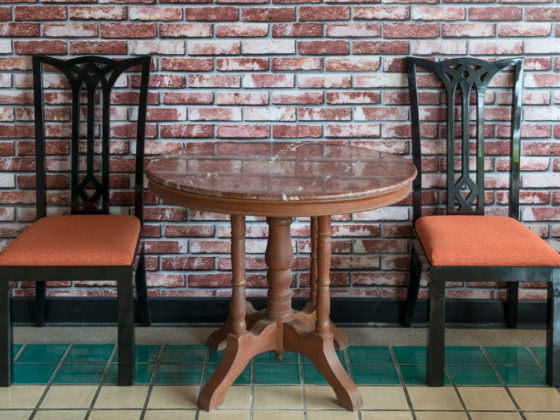
Welcome to the wonderful world of wicker. Whether it was the intricate spiral accents and open weave of a Victorian-era chaise-lounge that caught your eye, or the bold, geometric shape of a mid-century modern patio set that you had to have, a gorgeous example of handcrafted wicker furniture now adorns your home. But how do you take care of such a graceful piece? It must be fragile. Will antique wicker care need the expert handling and white-glove treatment of a museum curator?
Fortunately, no.
Despite its delicate look, antique wicker furniture is very hardy and stands up well to daily use. As a bonus, the upkeep of antique wicker furniture is surprisingly easy.
The Basics
- Attach the dusting brush to your vacuum cleaner. This is the attachment with soft bristles. (Did you know it had a name?) Use it to go over the wicker and remove any dust, animal hairs, or other bits from between the fibers.
- Use a paintbrush, or even a pair of tweezers to remove more stubborn pieces of fluff that the vacuum can’t get.
- Some experts even recommend an old toothbrush to clean the points where the wicker fibers meet the wood frame of the furniture, (just don’t try to add any toothpaste, no matter how “whitening” it claims to be).
- Spills can be removed by a clean cloth lightly moistened with water and a mild detergent or Murphy’s Oil Soap.
Deeper Cleaning
Once a season, if your antique wicker is a natural fiber like willow or rattan, give it a deeper cleaning by spraying it with a mister filled with water and Murphy’s Oil Soap, and then going over it with a soft brush. A paintbrush with soft bristles is ideal for this task.
Let the fibers dry completely before using the furniture again. Place it in a sunbeam or outdoors to help the process.
It’s important to note that if your wicker furniture is made from paper-wrapped wire or similar man-made fibers, you cannot do this procedure without risking damage to the paper. Just stick to the vacuuming and dry-brushing.
Untreated Wicker
Some pieces of antique wicker furniture with natural fibers have no paint or finish of any kind. Adding a finish would ruin the value, so these pieces are kept au naturel. Untreated pieces should be lightly sprayed with a water-filled mister every three weeks or so to keep the fibers from drying out and becoming brittle. For this reason, untreated wicker should also be kept indoors and not subjected to severe humidity changes.
Displaying and Using Your Furniture
Wicker furniture does best in an environment that is not too dry or too humid. Too dry of an environment will cause the fibers to become brittle, while humid areas can promote mold and mildew. For these reasons, it is best to keep your antique furniture away from heat or AC vents, and for goodness’ sake, do not store it outdoors year-round. Finally, for day-to-day use, cover any wicker seating with a padded cushion to protect the fibers for many years of enjoyment.
